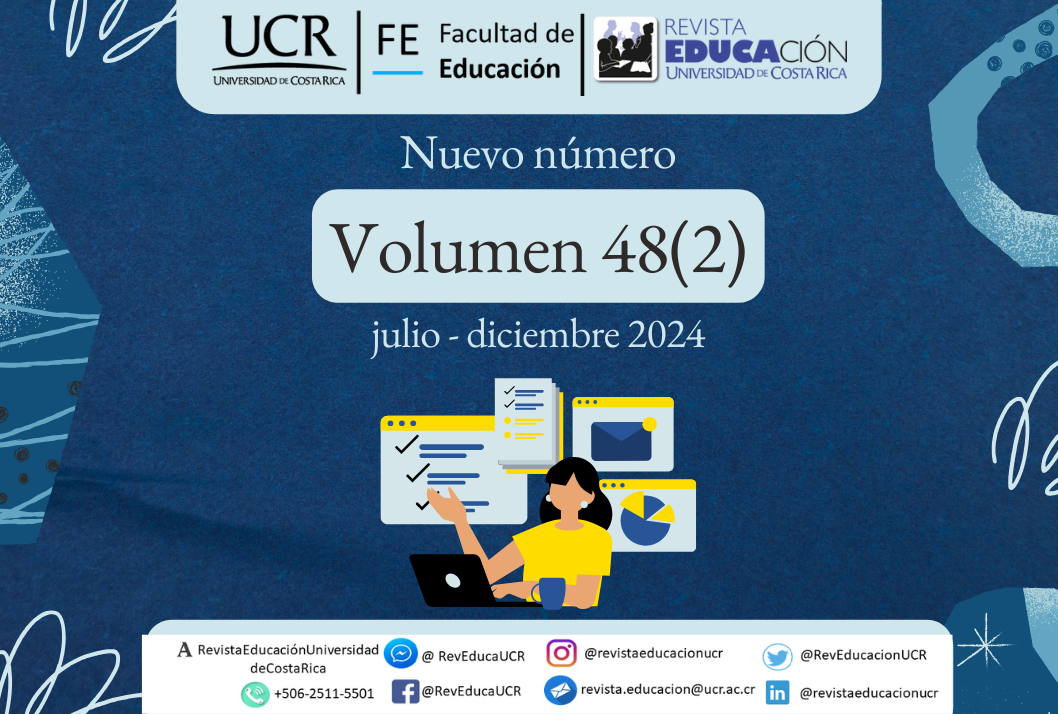Abstract
The objective of this investigation is to conduct a descriptive and parametric analysis on the technical and pedagogical aspects required to increase the motivation of students in the Business Management and Management and Administrative Computer Systems programs at Veracruzana University, through the development of a gamification application based on augmented reality. This exploratory and descriptive research specifies the aspects of the phenomenon under analysis, employing a quantitative approach for data collection and analysis. Statistical analyses were used to determine the guidelines and requirements for the proposed application. The sample included 83 students who completed the Digital Marketing course or its equivalent during the period from February to July 2023. The instrument development process ranged from concept design to operationalization to determine indicators and their items. Questionnaires, divided into main indicators—use of technologies, preferred didactics, and learning motivation—were employed, featuring multiple-choice answers to gauge students' habits and Likert scale items to assess their preferences. Results indicate that laptops are the most used device for academic activities, followed by cell phones, highlighting the importance of mobility for accessing educational experiences anytime and anywhere with internet access. Consequently, it is recommended to consider these devices for creating educational and interactive content for students, such as augmented reality applications.
References
Alemany, I., Campoy, I., Ortiz, M. y Benzaquén, R. (2015). Las orientaciones de meta en el alumnado de secundaria: Un análisis en un contexto multicultural. Publicaciones, 45, 83-100. https://www.redalyc.org/journal/1332/133258487007/html/
Azuma, R. T. (1997). A survey of augmented reality. [Un estudio sobre la realidad aumentada]. Presence: Teleoperators and Virtual Environments, 6(4), 355-385. https://www.cs.unc.edu/~azuma/ARpresence.pdf
Apple Inc. (2023). ARKIT 6 - Augmented Reality - Apple Developer. [ARKIT 6 – Realidad Aumentada] Apple Developer. https://developer.apple.com/augmented-reality/arkit/
Áreas de formación. El periódico de los Universitarios. (2017, agosto 7). Universo. https://www.uv.mx/universo/general/areas-de-formacion/
Barroso-Osuna, J., Cabero-Almenara, J., y Gutiérrez-Castillo, J. J. (2018). La producción de objetos de aprendizaje en realidad aumentada por estudiantes universitarios. Grado de aceptación de esta tecnología y motivación para su uso. Revista mexicana de investigación educativa, 23(79), 1261-1283 http://www.scielo.org.mx/scielo.php?script=sci_arttext&pid=S1405-66662018000401261&lng=es&tlng=es
Blázquez, A. (2017). Realidad Aumentada en Educación. Universidad Politécnica de Madrid. GATE. https://oa.upm.es/45985/1/Realidad_Aumentada__Educacion.pdf
Borrás O. (2015). Fundamentos de la gamificación. Universidad Politécnica de Madrid. GATE. https://oa.upm.es/35517/1/fundamentos%20de%20la%20gamificacion_v1_1.pdf
Cabero, J., y García, F. (coords.) (2016). Realidad Aumentada. Tecnología para la formación. Editorial Síntesis, S.A.
Cózar, R., De Moya, M. del V., Hernández, J. A., y Hernández, J. R. (2015). Tecnologías emergentes para la enseñanza de las Ciencias Sociales. Una experiencia con el uso de Realidad Aumentada en la formación inicial de maestros. Digital Education Review, 27(1). https://revistes.ub.edu/index.php/der/article/view/11622
Delgado, P. (2019). La adicción a los celulares preocupa a estudiantes y docentes. Observatorio / Instituto para el Futuro de la Educación. https://observatorio.tec.mx/edu-news/las-nuevas-generaciones-son-adictas-a-su-telefono-y-los-profesores-estan-preocupados/
Estudio Alfa. (2017, 21 de marzo). Top 5 herramientas para crear apps de realidad aumentada. Estudio Alfa. https://estudioalfa.com/top-herramientas-crear-apps-realidad-aumentada
Facultad de Contaduría y Administración. (2023). Facultad de Contaduría y Administración – Xalapa- FCA. https://www.uv.mx/fca
Facebook. (2023). Spark AR. GetApp. https://www.getapp.com.mx/software/129795/spark-ar
Fuerte, K. (2018). Realidad Aumentada y Realidad Virtual. Observatorio, Instituto para el Futuro de la Educación, Tecnológico de Monterrey. https://observatorio.tec.mx/edu-reads/edu-trends-realidad-virtual-y-realidad-aumentada/
Gallego, C. F. (2004). Cálculo del tamaño de la muestra. Matronas profesión, 5(18), 5-13.
George, D. y Mallery, P. (2003). SPSS for Windows step by step: A Simple Guide and Reference [SPSS para Windows paso a paso: una guía y referencia sencilla]. 11.0 Update(4thed.). Allyn and Bacon.
Google. (s. f.). ARCore. https://developers.google.com/ar?hl=es-419
Hernández-Trejo, L. (2023). Números de la Facultad de Contaduría y Administración Xalapa 2023. [Correo electrónico].
Hernández, R., Fernández C., y Baptista P. (2010). Metodología de la investigación. McGraw Hill.
Instituto Nacional de Estadística y Geografía [INEGI]. (2023). Encuesta Nacional sobre Disponibilidad y Uso de Tecnologías de la Información en los Hogares (ENDUTIH) 2022. https://www.inegi.org.mx/app/saladeprensa/noticia.html?id=8264
Innovation, I. (2021). Start with Gamification Principles: Learn from the world’s most popular games. [Video]. Youtube. https://www.youtube.com/watch?v=HbQU240s4WI
Loijens, L. W. S., Brohm, D., y Domurath, N. (2017). What is augmented reality. [Que es la realidad aumentada] En L. W. S. Loijens (Ed.), Augmented reality for food marketers and consumers (pp. 13-28). Wageningen Academic Publishers. https://doi.org/10.3920/978-90-8686-842-1_1
López-Fernández, R., Avello-Martínez, R., Palmero-Urquiza, D., Sánchez-Gálvez, S. y Quintana-Álvarez, M. (2019). Validación de instrumentos como garantía de la credibilidad en las investigaciones científicas. Revista Cubana de Medicina Militar, 48(Supl. 1). http://scielo.sld.cu/scielo.php?script=sci_arttext&pid=S0138-65572019000500011&lng=es&tlng=es
Marín-Díaz, V. (2015). La Gamificación educativa. Una alternativa para la enseñanza creativa. Digital Education Review, (27), 1-4. http://revistes.ub.edu/index.php/der/article/view/13433
Rigueros, C. (2017). La realidad aumentada: lo que debemos conocer. TIA, 5(2), 257-261. https://revistas.udistrital.edu.co/index.php/tia/article/view/11278/pdf
Ruiz-Torres, D. (2011). Realidad Aumentada, educación y museos. Revista ICONO 14. Revista Científica De Comunicación Y Tecnologías Emergentes, 9(2), 212-226. https://doi.org/10.7195/ri14.v9i2.24
Sarosa M., Chalim A., Suhari S., Sari Z. y Hakim H. B. (2019). Developing augmented reality based application for character education using unity with Vuforia SDK. Journal of Physics: Conference Series, 1375, 1-7. https://doi.org/10.1088/1742-6596/1375/1/012035
Statista. (2024). Redes sociales con mayor número de usuarios activos a nivel mundial en enero de 2024. Statista. https://es.statista.com/estadisticas/600712/ranking-mundial-de-redes-sociales-por-numero-de-usuarios/
Torres-González, J. A. (2023). Didáctica y construcción del conocimiento. Revista Internacional de Investigación en Ciencias Sociales, 19(2), 141-144. https://doi.org/10.18004/riics.2023.diciembre.141
Universia. (2023). Universidad Veracruzana. Universia. https://www.universia.net/mx/universidades/universidad-veracruzana.01382.html
Universidad Veracruzana. (2017). Programa de estudio de experiencia educativa: Marketing digital. [Archivo PDF]. https://bit.ly/40aMKec
Universidad Veracruzana. (2023). Presentación – Nosotros. Universidad Veracruzana. https://www.uv.mx/universidad/presentacion/
Unity Technologies. (2023). Unity documentation. https://docs.unity.com/
Vázquez, E., Gómez, J., Burgos, C. G. y López, E. (2020). Realidad aumentada (RA) y procesos didácticos en la universidad: estudio descriptivo de nuevas aplicaciones para el desarrollo de competencias digitales. Psychology, Society, & Education, 12(3), 275-290. https://dialnet.unirioja.es/servlet/articulo?codigo=7673696
Vuforia. (2023). Engine Developer Portal. Vuforia. https://developer.vuforia.com/
Werbach, K. y Hunter, D. (2012). For the Win: How Game Thinking Can Revolutionize Your Business. Wharton Digital Press.
Ospina, C. A. (s. f.). Kevin Werbach, Dan Hunter-For the Win_ How Game Thinking Can Revolutionize Your Business [Cómo el pensamiento de juego puede revolucionar su negocio]. Wharton Digital Press. https://es.scribd.com/document/491758384/Kevin-Werbach-Dan-Hunter-For-the-Win-How-Game-Thinking-Can-Revolutionize-Your-Business-Wharton-Digital-Press-2012
Xnova 360. (2023). La realidad aumentada en redes sociales 2022. Xnova 360. https://xnova360.com/realidad-aumentada-en-redes-sociales/
##plugins.facebook.comentarios##

This work is licensed under a Creative Commons Attribution-NonCommercial-NoDerivatives 3.0 Unported License.
Copyright (c) 2024 Revista Educación - Journal of Education







